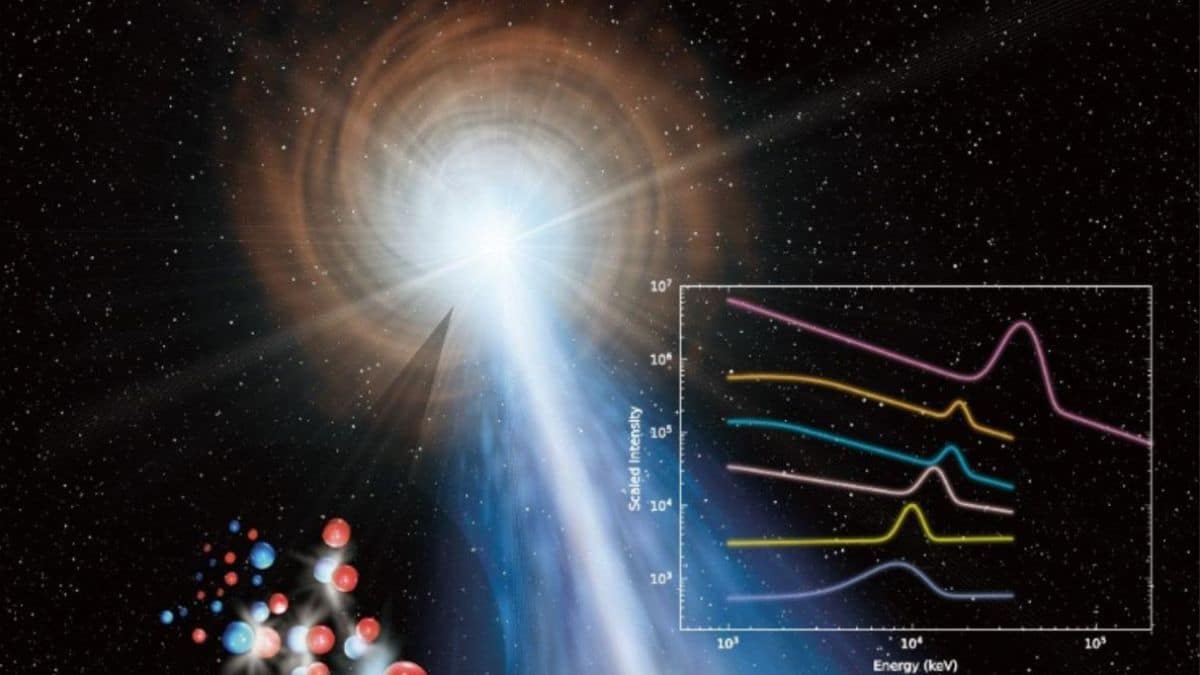 Image Credit: Interesting Engineering
Image Credit: Interesting Engineering
Chinese scientists have identified a gamma-ray spectral line with energy levels peaking at 37 million electron volts, marking the highest-energy gamma-ray spectral line ever observed from cosmic celestial bodies. This groundbreaking discovery is set to advance the understanding of gamma-ray bursts (GRBs), a phenomenon long shrouded in mystery.
Objectives
The study, led by researchers from the Institute of High Energy Physics (IHEP), Chinese Academy of Sciences, aimed to delve deeper into the nature of GRBs. Published as a cover story in the journal Science China Physics, Mechanics & Astronomy, the research highlights significant advancements in multi-wavelength and multi-messenger time-domain astronomy. The primary objective was to enhance the comprehension of GRBs through precise spectral analysis and observations.
Historical Context
GRBs, the most violent explosive phenomena in the universe after the Big Bang, occur during the collapse of massive stars or the merging of binary compact stars, such as neutron stars and black holes. The first GRB was discovered in 1967, sparking a global scientific interest. In recent years, the advent of gravitational wave discoveries has brought GRBs into the spotlight, encouraging extensive studies and observations.
One of the brightest GRBs, coded GRB 221009A, was observed on October 9, 2022. This event, resulting from the collapse of a massive star, provided a unique opportunity for scientists worldwide to study these enigmatic bursts more closely.
Significance
The discovery of the gamma-ray spectral line peaking at 37 million electron volts sets a new record and promises to deepen the understanding of GRBs. This breakthrough was made possible through joint observations by China’s space-based and ground-based telescopes, including the Insight-HXMT X-ray astronomy satellite, the GECAM-C all-sky gamma-ray monitor, and the Large High Altitude Air Shower Observatory. Together, these instruments achieved an unprecedented measurement of GRB 221009A.
The research team employed data from both the GECAM-C space telescope and the Fermi Gamma-ray space telescope for a detailed spectral analysis. After meticulous and challenging analyses of the instrumental effects and background issues caused by the extreme brightness of the burst, the team successfully extracted precise and reliable GRB spectra.
The spectral line discovered in the energy spectrum of GRB 221009A featured a power-law decay pattern for both the line energy and flux, with an almost constant and relatively narrow line width. During the main burst phase of the GRB, the energy of this spectral line reached up to 37 million electron volts, setting a new benchmark in the field.
About the Researchers and Research Team
The research team was led by Xiong Shaolin, the principal investigator of the GECAM series space telescopes at IHEP. Xiong and his team’s findings are poised to make a substantial impact on the study of GRBs and the mechanisms behind them. Their work underscores the importance of China’s ambitious satellite programs dedicated to GRB observations, including Insight-HXMT, the GECAM series, the Einstein Probe, and the SVOM.
Xiong emphasized the significance of these findings for understanding the physics and mechanisms behind GRBs and the relativistic jets they launch. He noted that these discoveries hold promise for unveiling the mysteries of the extreme universe.
Conclusion
This remarkable discovery by Chinese scientists not only sets a new record in gamma-ray observation but also marks a significant milestone in the study of cosmic phenomena. The collaborative efforts and advanced technology used in this research underscore the importance of continued investment in space-based and ground-based telescopes. As scientists continue to unravel the mysteries of GRBs, this discovery stands as a testament to human ingenuity and the relentless pursuit of knowledge in the field of astronomy.
